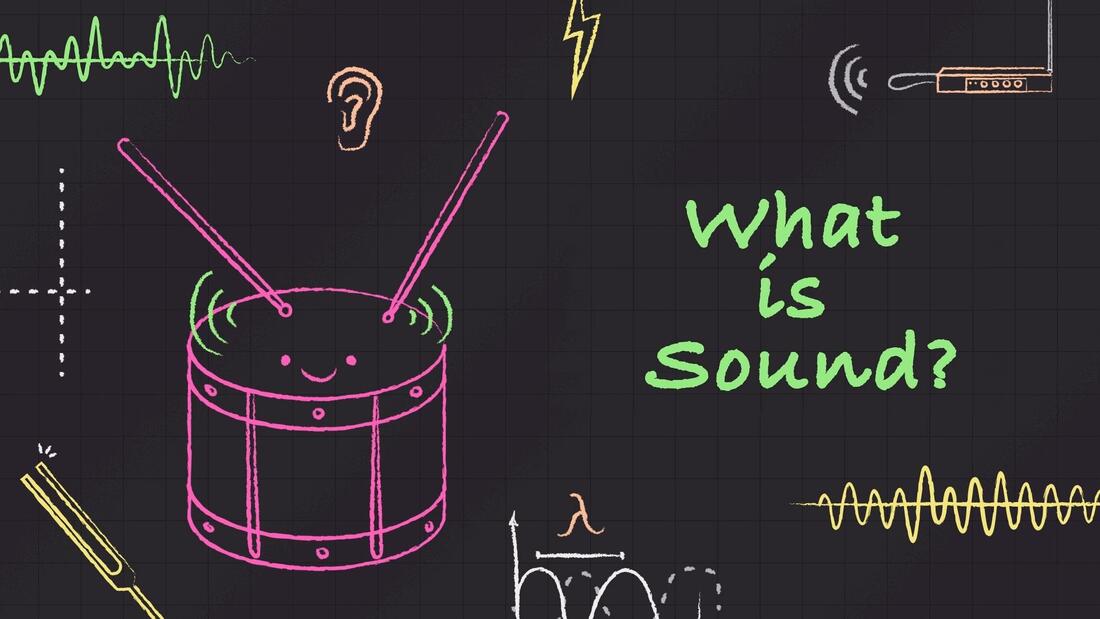What is Sound
Sound is simply is a disturbance of molecules. These molecules can be air molecules or the molecules of solid objects. When any kind of event happens that takes these mediums away from their restful state and forces them to vibrate, you get a disturbance which is perceived as sound.
When a disturbance happens the molecules are compressed together and they shoot off in every direction from the point of disturbance. These disturbed molecules will bump into each other and spread out in compressed waves. In their wake they will leave an area where there are less molecules. Unless the disturbance is sustained, the particles will come back to a restful state. This is the elastic medium that is necessary for sound to exist.
Air happens to be very elastic medium and it's also very easy to disturb. A wall is much more rigid but also has some elasticity and can also transmit sound. If you strike a wall with a hammer the vibration will travel more quickly than in air because the molecules are so close together but It will also decay much faster because the material is more rigid.
When a disturbance happens the molecules are compressed together and they shoot off in every direction from the point of disturbance. These disturbed molecules will bump into each other and spread out in compressed waves. In their wake they will leave an area where there are less molecules. Unless the disturbance is sustained, the particles will come back to a restful state. This is the elastic medium that is necessary for sound to exist.
Air happens to be very elastic medium and it's also very easy to disturb. A wall is much more rigid but also has some elasticity and can also transmit sound. If you strike a wall with a hammer the vibration will travel more quickly than in air because the molecules are so close together but It will also decay much faster because the material is more rigid.
What is Audio
The basics of audio are the fundamental principles of what makes up sound and how it disperses in space. By understanding these basic principles, you can learn to make better decisions when recording, mixing or designing your studio.
Understanding the basics of audio will take away a majority of the guesswork that comes when recording and mixing. Most great productions happen by design, not by chance. When magical performances occur they are captured on a solid foundation of thinking and actions that preserve them well for others to enjoy.
Understanding the basics of audio will take away a majority of the guesswork that comes when recording and mixing. Most great productions happen by design, not by chance. When magical performances occur they are captured on a solid foundation of thinking and actions that preserve them well for others to enjoy.
